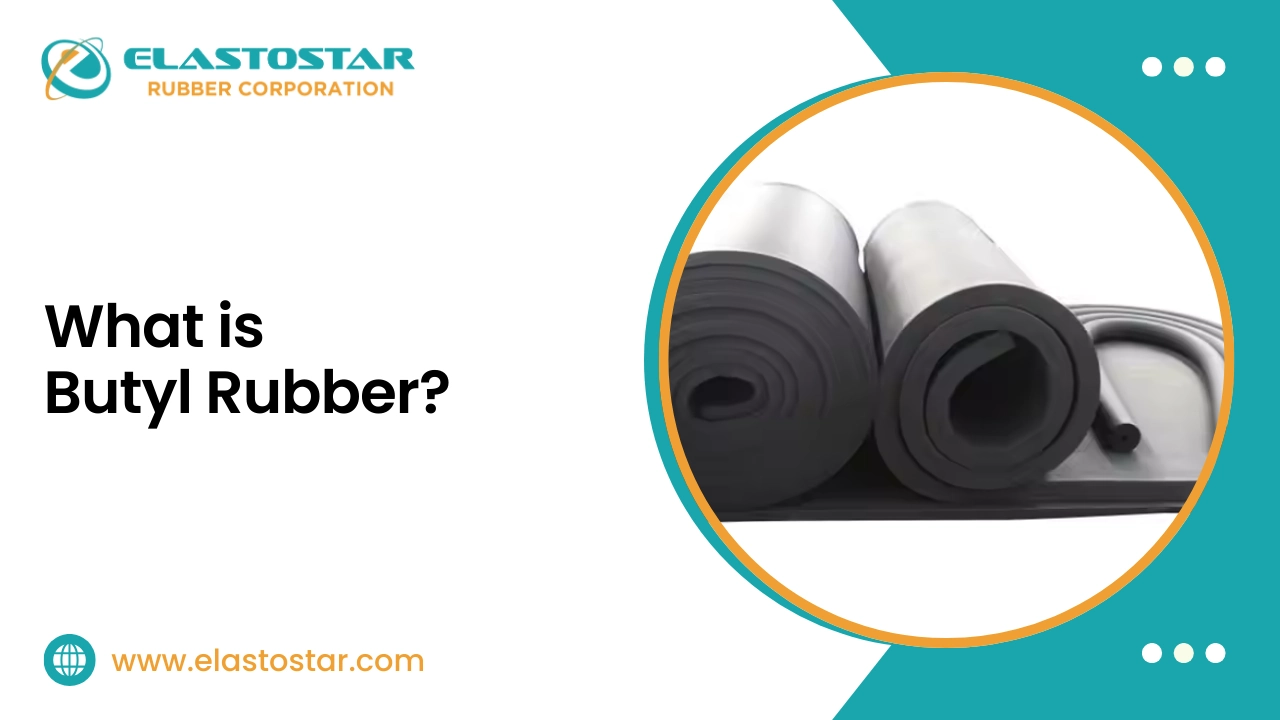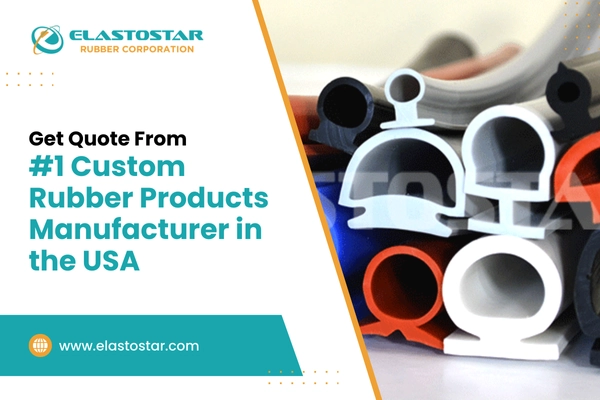
Butyl rubber is a highly versatile synthetic material known for its exceptional impermeability, durability, and flexibility. Made from polyisobutylene and a small amount of isoprene, it offers superior resistance to gas, moisture, and environmental factors.
Its adaptability makes it indispensable in industries like automotive, construction, and pharmaceuticals. With applications such as butyl sheeting for waterproofing and insulation, it complements other synthetic rubbers.
This blog will explore butyl rubber’s features, advantages, and applications, helping you understand its role as a cornerstone material in modern manufacturing.
Table of Contents
Composition and Manufacturing of Butyl Rubber
Butyl rubber is synthesized through the polymerization of isobutylene, a hydrocarbon, with a small percentage of isoprene. This combination creates a material with unique properties, including exceptional impermeability and flexibility.
The primary component, polyisobutylene, forms the backbone of the polymer chain, giving butyl rubber its characteristic resistance to gas and moisture.
The manufacturing process involves precise control of temperature and pressure to ensure the desired molecular structure. This structure allows butyl rubber to be easily vulcanized, improving its mechanical properties.
These features make it a preferred choice for applications requiring airtight sealing and waterproofing, such as butyl sheeting and tire linings.
What are the Properties of Butyl Rubber?
The unique properties of butyl rubber make it an indispensable material in various industries. Below is a summary of its key attributes:
| Property | Description |
| Impermeability | Exceptional resistance to gasses and moisture, ideal for sealing and insulation. |
| Durability | Longevity is due to resistance to aging, weathering, and chemical exposure. |
| Flexibility | Remains pliable across a wide temperature range, ensuring consistent performance. |
| Butyl Sheeting | Used in waterproofing and industrial sealing solutions like membranes and liners. |
These properties underline the versatility and reliability of butyl rubber in diverse applications.
Read More- The Top 7 Types of Rubber.
Advantages and Disadvantages of Butyl Rubber
The advantages and disadvantages of butyl rubber make it a suitable choice for specific applications, while some limitations must be considered depending on the use case.
Advantages
- Superior Sealing Capabilities: Exceptional impermeability to gasses and moisture, making it ideal for airtight and waterproof applications.
- Flexibility and Versatility: Perform consistently across a wide range of temperatures, from -40°C to 120°C.
- Resistance to Environmental Factors: Excellent durability against ozone, UV rays, and weathering ensures long-lasting performance in outdoor conditions.
Disadvantages
- Limited Flame Resistance: Not suitable for high-flame environments or applications requiring fireproof materials.
- Unsuitable for Exposure to Oils and Hydrocarbons: Can degrade when in contact with certain oils, limiting its use in some industrial applications.
- Higher Manufacturing Complexity: Requires precise control during production, making it more challenging and potentially costlier than other rubbers.
These pros and cons highlight butyl rubber’s strengths and limitations, helping industries select the right material for their specific needs.
What are the Applications of Butyl Rubber?
The versatility and reliability of butyl rubber make it a key material across a wide range of industries.
Automotive
- Inner Tubes: Provides excellent air retention for bicycle, car, and truck tires.
- Tires: Used as the inner lining in tubeless tires due to its impermeability to gases.
- Vibration-Damping Components: Reduces noise and vibration in automotive parts.
Construction
- Butyl Sheeting: Essential for waterproofing in roofing, foundations, and underground structures.
- Sealants and Caulks: Provides effective sealing in construction joints and glass insulation.
- Sound Dampening: Used in construction panels to reduce noise transmission.
Industrial and Pharmaceutical
- Gaskets: Ensures airtight sealing in industrial machinery.
- Adhesives: Used in bonding materials due to their chemical stability and flexibility.
- Medical Stoppers: Provides low gas and moisture permeability for vial and bottle closures.
Electrical and Electronics
- Cable Insulation: Offers excellent electrical insulation and moisture resistance for power and communication cables.
- Encapsulation Materials: Protects sensitive electronic components from environmental factors.
Consumer Goods
- Sports Equipment: Used in manufacturing inflatable items like soccer balls, basketballs, and airbeds.
- Protective Gear: Enhances durability and resistance in waterproof clothing and accessories.
Packaging
- Vacuum Seals: Used in food packaging to maintain freshness by preventing gas and moisture transmission.
- Liners: Ensures safety in industrial packaging of chemicals and sensitive products.
Environmental and Agricultural Applications
- Pond Liners: Used for water retention in landscaping and agricultural irrigation.
- Chemical Barriers: Acts as a protective layer in containment systems to prevent leakage of hazardous substances.
Aerospace and Defense
- Inflatable Structures: Provides flexibility and impermeability for applications like inflatable shelters.
- Shock Absorption: Used in components that require vibration and impact resistance.
Read More- Which is the Best Type of Rubber for Your Application?
What are the Alternatives to Butyl Rubber?
While butyl rubber is known for its unique properties, alternative materials like silicone rubber can often provide superior performance in specific applications.
Understanding these alternatives helps industries choose the right material for their needs.
Silicone Rubber as a Versatile Alternative
Silicone rubber excels as a high-performance material that excels in applications where butyl rubber may have limitations. Its properties include:
- High-Temperature Resistance: Silicone rubber can hold extreme temperatures, often ranging from -60°C to 230°C, making it suitable for high-heat environments where butyl rubber might degrade.
- Medical-Grade Applications: Silicone rubber’s biocompatibility and non-reactive nature make it ideal for medical devices, implants, and pharmaceutical seals.
- Flexibility and Elasticity: Silicone retains its elasticity over a broader temperature range compared to butyl rubber, making it a preferred choice for dynamic sealing applications.
Comparison of Silicone and Butyl Rubber in Use Cases:
| Property | Butyl Rubber | Silicone Rubber |
| Impermeability | Superior resistance to gases and moisture. | Moderate resistance but still effective. |
| Temperature Range | -40°C to 120°C | -60°C to 230°C |
| Chemical Resistance | Resistant to chemicals but unsuitable for oils and hydrocarbons. | Excellent resistance to a wide range of chemicals, including oils. |
| Applications | Automotive inner tubes, construction waterproofing, and gaskets. | Medical devices, high-temperature seals, and electronics. |
| Durability | Strong resistance to aging and weathering. | Highly durable with excellent UV stability. |
Elastostar Rubber Corporation specializes in silicone rubber products, providing customized solutions for industries that demand precision, high performance, and adaptability. From medical-grade seals to heat-resistant gaskets, we deliver unmatched quality and innovation in silicone rubber manufacturing.
By understanding the differences between butyl rubber and silicone rubber, industries can make informed decisions to ensure optimal performance and reliability in their applications.
Elastostar Rubber Corporation – Your Partner in Silicone Rubber Solutions
At Elastostar Rubber Corporation, we take pride in being a leader in manufacturing high-quality, custom-engineered silicone rubber products. Our expertise in precision design and production allows us to deliver reliable solutions customized to meet your specific needs.
Applications of Our Silicone Rubber
- Medical and Pharmaceutical: Bio-compatible seals and tubing designed for safety and performance.
- Automotive: Heat-resistant gaskets and hoses for reliable functionality.
- Construction: Flexible weatherproofing seals to protect your structures.
- Electronics: Insulation for high-temperature components ensures safety and durability.
We excel in providing innovative, versatile, and durable silicone rubber solutions, making us your trusted partner for critical applications. Let us help you achieve the best results with our industry-leading expertise.
Recommended Reads
- Rubber Sheets: Types, Uses, Features and Benefits
- Which Type of Rubber Gasket is the best?
- Silicone Versus Silicone: How Do They Differ?

Conclusion
Butyl rubber is a reliable material for applications requiring impermeability, durability, and chemical resistance, making it invaluable in industries like automotive, construction, and pharmaceuticals.
For applications needing greater flexibility, high-temperature stability, or medical-grade properties, silicone rubber serves as an excellent alternative. Understanding the strengths of these materials enables industries to make informed choices for their specific needs, ensuring optimal performance and long-lasting results.
FAQs
1. What is butyl rubber used for?
Butyl rubber is widely used in applications requiring airtight sealing and waterproofing. Common uses include inner tubes for tires, roofing membranes, gaskets, adhesives, medical stoppers, and sound-dampening materials.
2. What are the disadvantages of butyl rubber?
Butyl rubber has some limitations, including poor flame resistance, difficulty bonding with other materials, and incompatibility with oils and hydrocarbons. These factors make it unsuitable for certain high-heat or oil-rich environments.
3. Is butyl rubber waterproof?
Yes, butyl rubber is highly waterproof. Its excellent impermeability to water and moisture makes it ideal for applications like roofing membranes, pond liners, and waterproofing sheeting. Elastostar also offers alternative materials like silicone rubber for high-performance waterproofing needs.
4. How to identify butyl rubber?
Butyl rubber can be identified by its smooth surface, high stretchability, and resistance to tearing. It also exhibits excellent impermeability to gases and moisture compared to natural rubber or other synthetic rubbers.
5. How long does butyl rubber last?
Butyl rubber is highly durable and can last for decades in many applications, especially when used in environments that avoid extreme heat or direct exposure to oils. Get in touch with us for reliable silicone rubber solutions.
6. Which is better: butyl or EPDM rubber?
Both have their strengths: Butyl rubber excels in impermeability and chemical resistance, making it ideal for sealing and waterproofing. EPDM rubber, however, offers better UV resistance and flexibility over a wider temperature range, making it suitable for outdoor applications. The choice depends on the specific application requirements.



